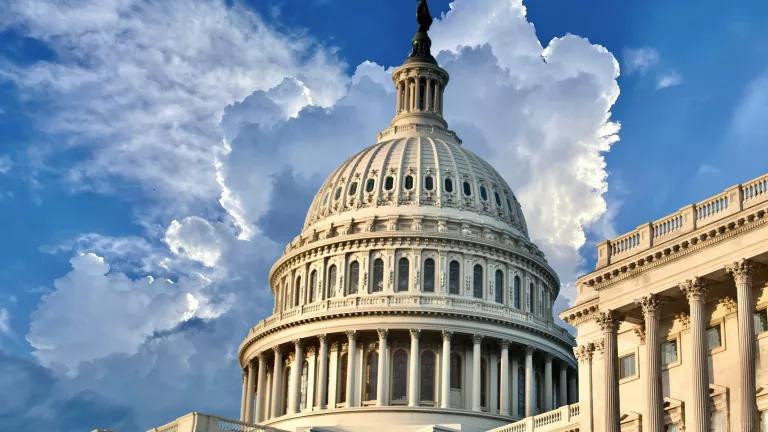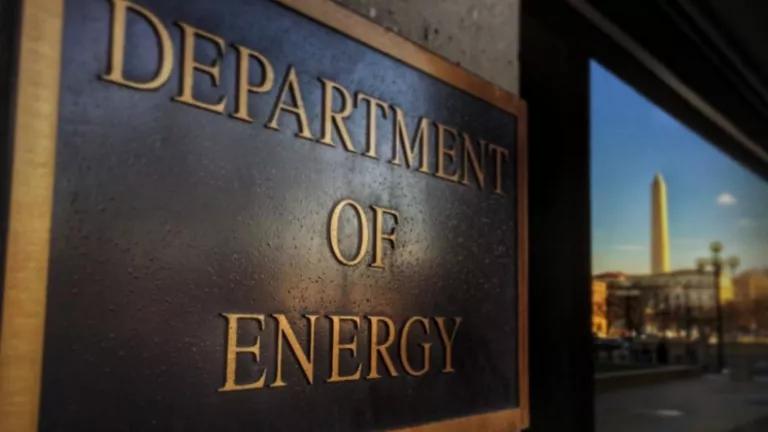Multiple Studies Confirm: Virginia Can Cut Carbon from its Power Fleet--Affordably and Reliably--With Clean Energy

In the year since the Clean Power Plan was proposed last summer, naysayers have been spinning doomsday scenarios claiming that cutting carbon pollution would somehow be difficult and costly for Virginia.
This could not be farther from the truth, as a recent report from a consumer watchdog affirms.
In reality, the new federal rule was created to protect our health, while also resulting in net economic growth by increasing energy efficiency and cost-effective renewable energy to reduce carbon pollution, the biggest driver of the climate change that is swallowing Tangier Island and imperiling Virginia's coastline today.
We know a lot of the naysayers aren't simply making their unfounded accusations for their own health. When you follow the money trail, you'll see the path usually leads to their bottom line.
In fact, they actually should be worried about their health because it's been well documented that climate change is an active threat to the wellbeing of Virginians across the state. With Virginia carrying the ignominious distinction of having one of the asthma capitals of the United States in her capital city, and with the opportunity on the other hand to save Virginians' lives under the Clean Power Plan before us, complacent inaction is simply not an option. (But that's a blog for another time...)
Thankfully, the doomsday scenarios are being proven untrue again and again.
The latest example is the recent study from consumer advocacy group Public Citizen, showing Virginians will actually see lower bills if Virginia's vast, untapped energy efficiency reserves are deployed to meet the proposed carbon targets, saving the average Virginian $135-$147 annually.
Change can be hard--except when clean energy comes into play
Those rallying against the Clean Power Plan appear to be clinging to the old adage that Change is Hard.
But for the rest of us, when energy efficiency and renewables are brought in as the heavy artillery to curb carbon pollution, we're finding that it's actually easy.
In fact, Virginia has already made the bulk of the shift toward less dirty energy, with plans in place to achieve the vast majority of the Clean Power Plan's proposed carbon pollution reductions. And deploying more energy efficiency and renewable energy is proving (again) the best path forward for the state.
This path is illuminated yet again in the context of the Clean Power Plan.

Studies by NRDC and the Organization of PJM States (PJM), for example, and a report by the Analysis Group, are adding to the mounting evidence showing the emissions reductions set out in the Clean Power Plan are achievable and affordable for Virginia--particularly when clean energy comes into play. And thanks to the state's recent year of progress and investments, we can build upon these energy efficiency and renewables progress to get across the finish line.
The recent studies demonstrate Virginia won't have to undergo much change at all to address climate change-fueling carbon emissions, if we rely on Virginia's largely untapped renewable energy and energy efficiency potential.
Here's why:
Public Citizen analysis reveals lower energy costs
This week, consumer advocate Public Citizen released an analysis demonstrating that the average Ohio household will enjoy reduced electric bills under the Clean Power Plan, simply due to increased energy efficiency.
PJM modeling demonstrates achievable pollution reductions AND cost savings
The electricity grid operator whose very job it is to ensure that the lights stay on across 12 states, including in Virginia, found earlier this year that Virginia can very easily (and profitably) satisfy the Clean Power Plan targets if it coordinates with neighboring states and focuses on clean energy.
These findings are bolstered by a prior PJM assessment from 2014 concluding that the grid across Virginia could support 30% wind and solar energy and see drastic reductions in pollution and costs--all without impacts on reliability.
The Analysis Group confirms the reliability of the grid under the Clean Power Plan
Experts from the Analysis Group conclude reliability is NOT a "significant concern" under the Clean Power Plan.
The grid operators that manage the flow of electricity in the various regions across the country (including PJM) are well positioned to lower carbon pollution from existing power plants while looking to the reliability tools and operating procedures it already uses with great success.
In fact, according to the Analysis Group, PJM is already adapting to changes underway in the electric industry, and doing so successfully from a reliability point of view.
As a region with electric capacity totaling approximately 200 GW, PJM has seen some 12.5 GW of mostly aging, coal-fired resources retire during the 2010-2014 period, due largely to economic and regulatory factors. Another 7.6 GW is expected to be retired over the next 3-4 years. These plants are being replaced with new resources--primarily natural gas-fired and renewable projects--and there is a deep bench of additional new proposed projects ready to step in to meet future needs.
To be sure, PJM has demonstrated success with reliability challenges in the past, including retirements related to low natural gas prices and the MATS rule, and stresses on the fleet during the winter 2014 Polar Vortex. In the latter case, PJM called upon energy efficiency and demand response to save the day during extreme cold weather, preventing potentially life-threatening power shortages across much of the Mid-Atlantic.
These events are a kind of proving ground for grid operators like PJM, demonstrating how numerous planning, operational, and market tools can rise to the occasion to ensure that service is maintained while implementing the Clean Power Plan.
And those making claims to the contrary simply are ignoring the cold hard facts. Instead they are turning a blind eye both to the proven competency of our nation's grid operators, as well as the grid-strengthening power of energy efficiency and demand response.
Virginia can lead the nation--IF it taps its clean energy potential
Virginia should and could be a regional clean energy leader.

Getting on track and fully harnessing the state's energy efficiency and renewable energy potential will facilitate Clean Power Plan compliance and position Virginia at the forefront of the clean energy economy, and possibly even the Midwest.
For years, we've been tip toeing our way across the shallow end of the clean power "pool." Based on the evidence and analyses already out there we know Virginia is more than ready to jump in with both feet when the Clean Power Plan rule goes final very soon.
Change is good, particularly when it's already underway. And especially when we know we will succeed.




